Slides for the finals can be viewed here.
Project Title: Object-Oriented Art
Background
I’m recently interested in the nascent philosophical movement known as Object-Oriented Ontology (usually called by the acronym OOO), which has attracted a lot of attention from the arts and humanities scene. In short, OOO rejects the idea of human specialness: we should not place the privilege of human existence over the existence of nonhuman objects. Working on my AI Arts final project, I convinced myself that my works, in part, reflect the idea of OOO, so I named this series “Object-Oriented Art.” In contrast to the mainstream phenomenology that presumes things are only real insofar as they are sensible to human conception, OOO claims that things do exist beyond the realm of human cognition. In his article, Dylan Kerr lists some examples of questions that are posed by OOO artists: “what does your toaster want? How about your dog? Or the bacteria in your gut? What about the pixels on the screen you’re reading off now—how is their day going? In other words, do things, animals, and other non-human entities experience their existence in a way that lies outside our own species-centric definition of consciousness?” One of the main criticisms against OOO is that it is simply impossible for us to withdraw from human perception. Wondering about how the day of pixels on my screen might go is fascinatingly imaginative; and yet, that idea itself is still too human-centered—it is nothing more than applying human-only notions to other nonhuman objects. An interesting parallel can be found from an emerging AI arts: a controversy about whether the credit of AI-generated artworks goes to AI. As of now, I think, all the algorithmic artworks in the world are still human’s brainchild. Humans programmed the code, collected data, and fed algorithms these data to create a piece of art. Unless AI does the same process by itself without any single human involvement, I think AI is no more than an art tool like a brush. For my project, I put emphasis on the possibilities of AI as an art tool—algorithms as my brush, data as my paint.

Motivation
To put in a nutshell, my project is to feed a number of algorithms with my own sketches in order to visualize my ideas and impressions. Below are my original drawings:
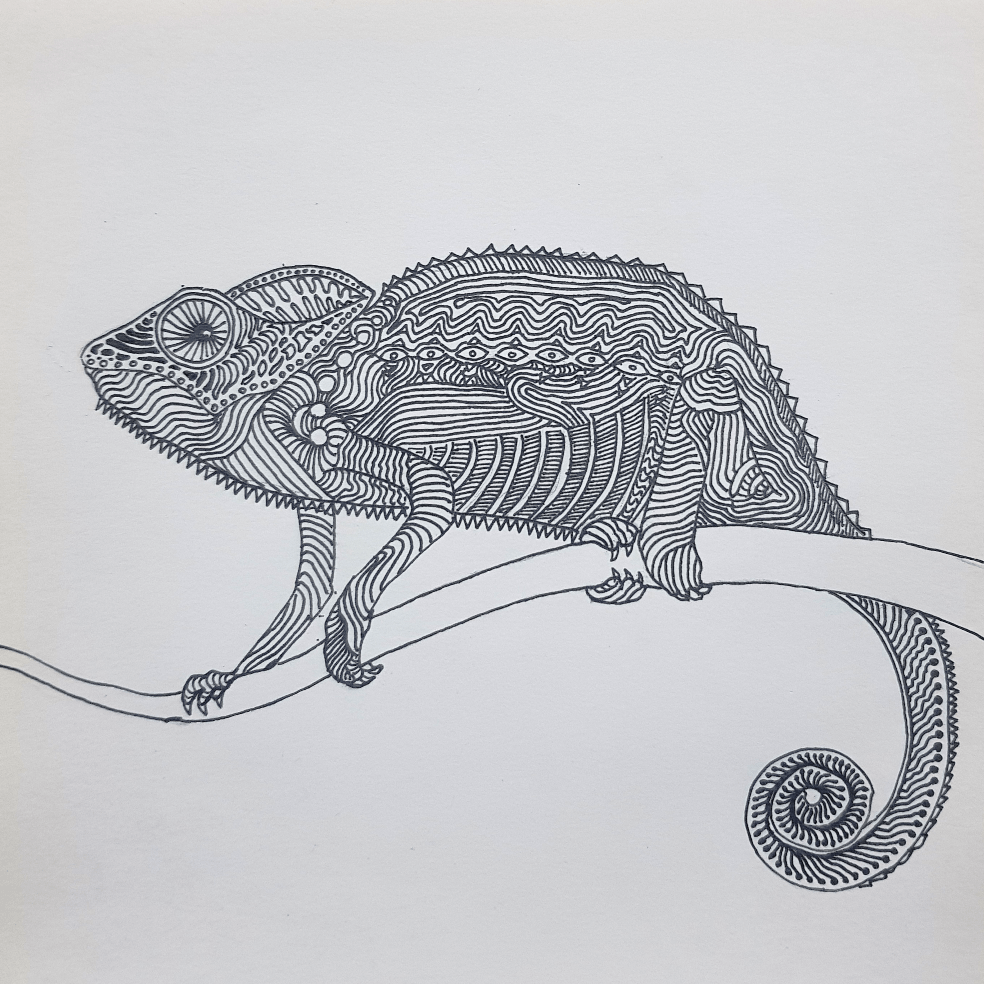
Chameleon is the living example of “style transfer,” which I’m using primarily to color and morph my drawings.
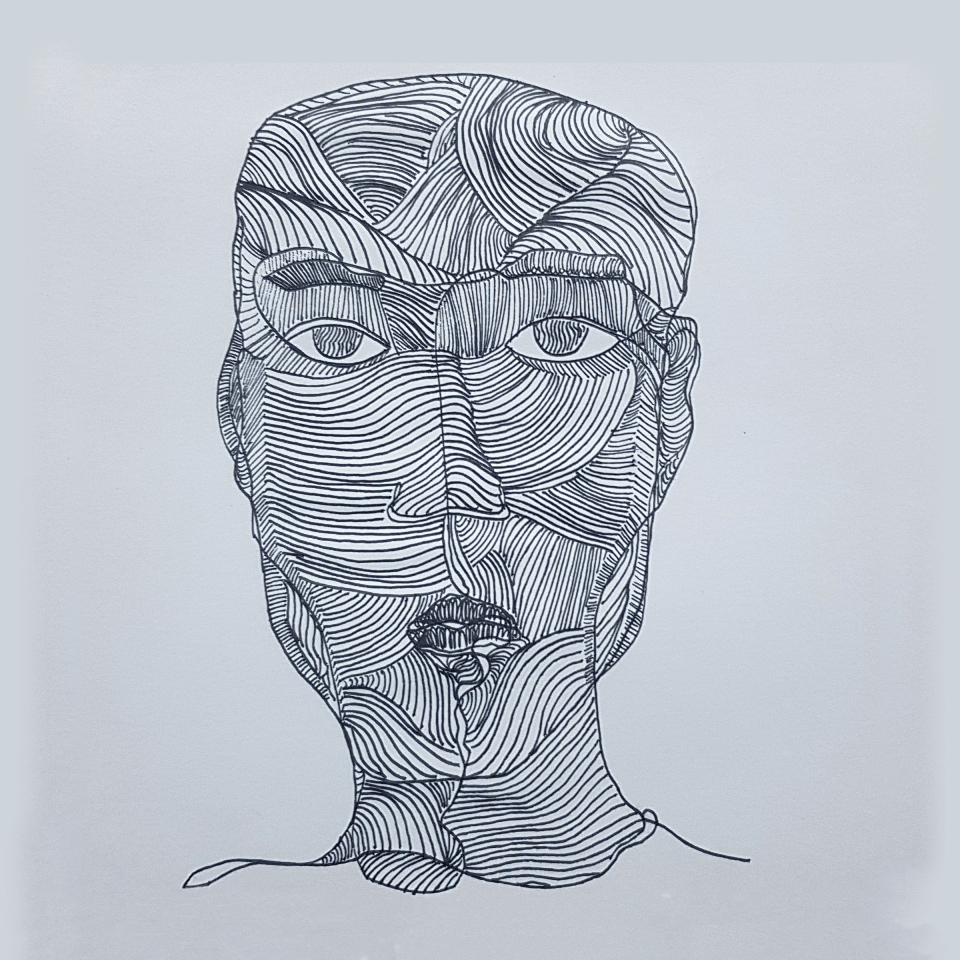
This is my self-portrait.
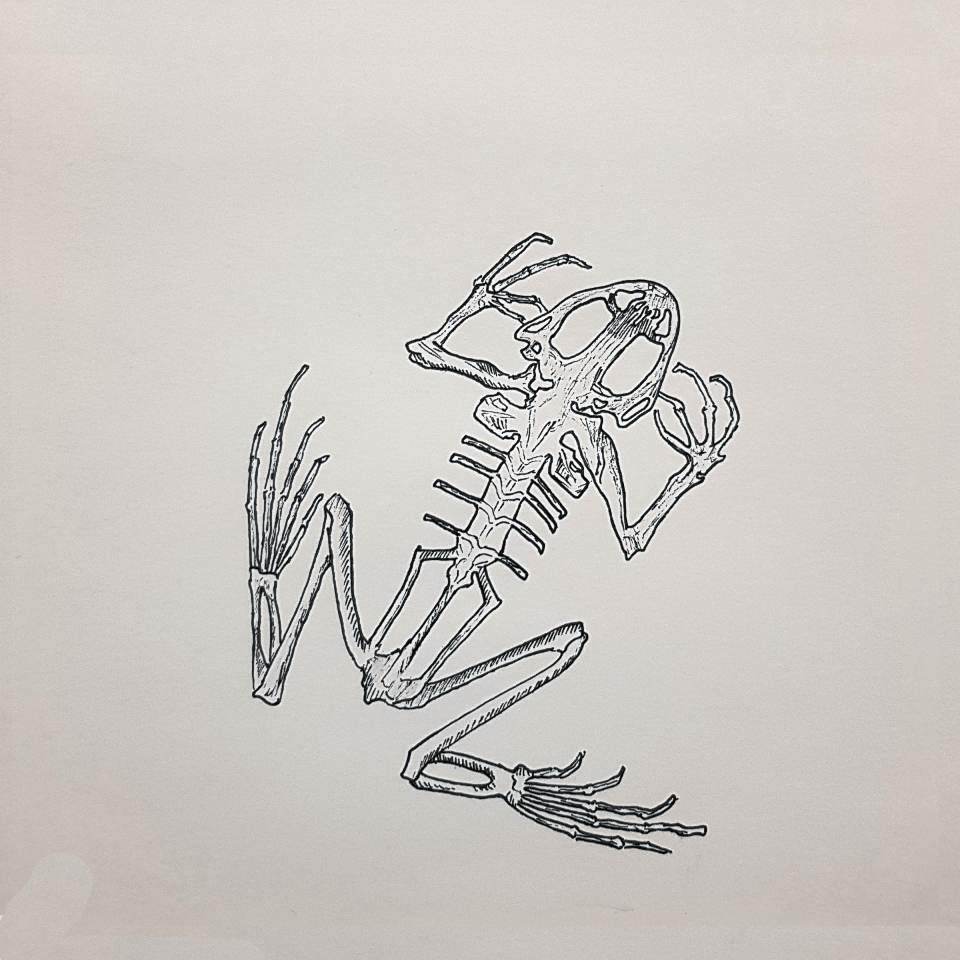
And this is a skeleton of frog. When I was very young, probably 3 or 4 years old, I was floating around my house and found this tiny frog skeleton. I stared at it for quite a while, knew right away that it is not alive anymore. It was my first encounter with the idea of death.
Let’s see how AI spices these drawings up!
Methodology
If I fed algorithms my raw sketches, the result would be disappointing. As their background is just plain white, AI will fill up this blank with dull, redundant patterns. So I had to do a sort of “biscuit firing” by adding some colors and patterns. I used the tool called “Painnt” to apply thin styles on my drawings.

The next step was to choose data. For the chameleon, I intended to visualize a future chameleon that is surrounded by human-caused environmental pollution.
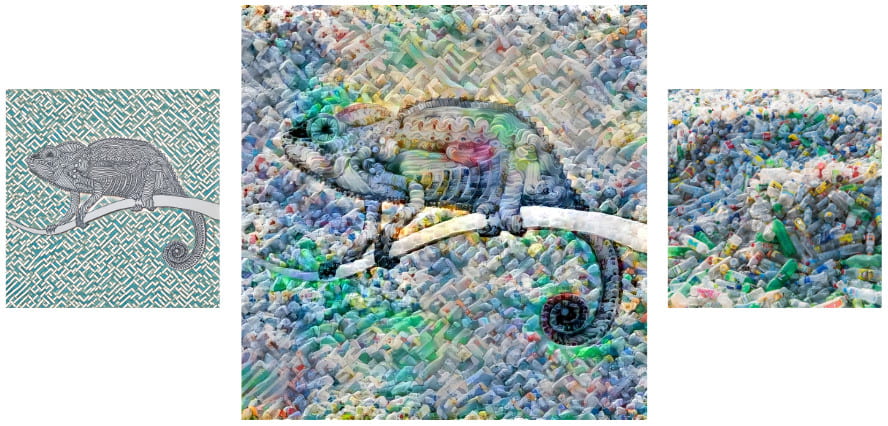
I combined my drawing with an image of plastic waste using “DeepStyle” powered by Google. DeepStyle allows its user to easily apply the style transfer effect on one’s image; it usually takes five minutes to train and yield a result. The generated result is already pretty interesting, but it the distinction between the object and background is not highly evident.
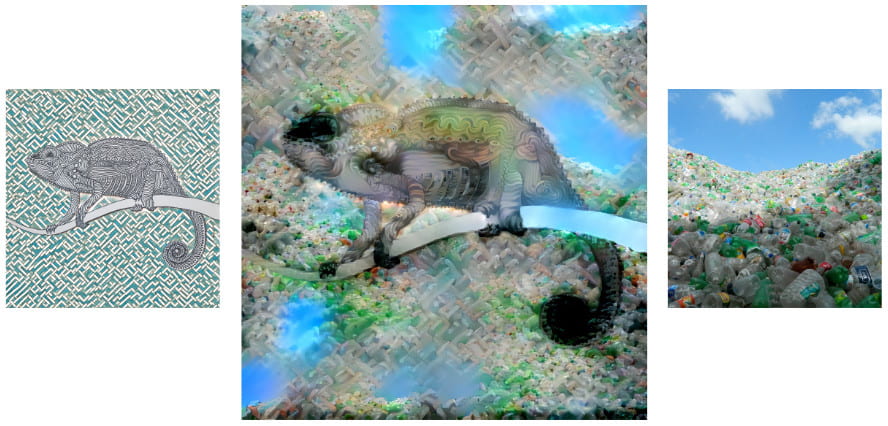
So I repeated the same process with a different image of plastic waste. You can see how the sky and shadow of the right image are partially shown in the generated result.
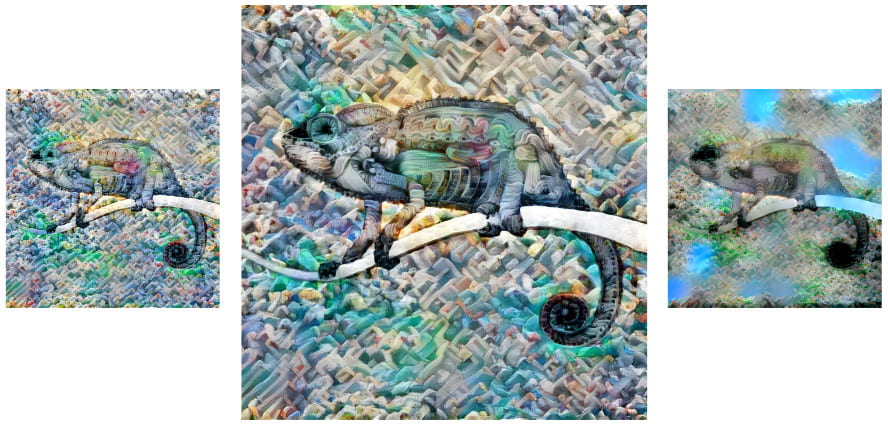
Using Photoshop, I combined the two results together and got this final image. However, I needed AI’s help once more.
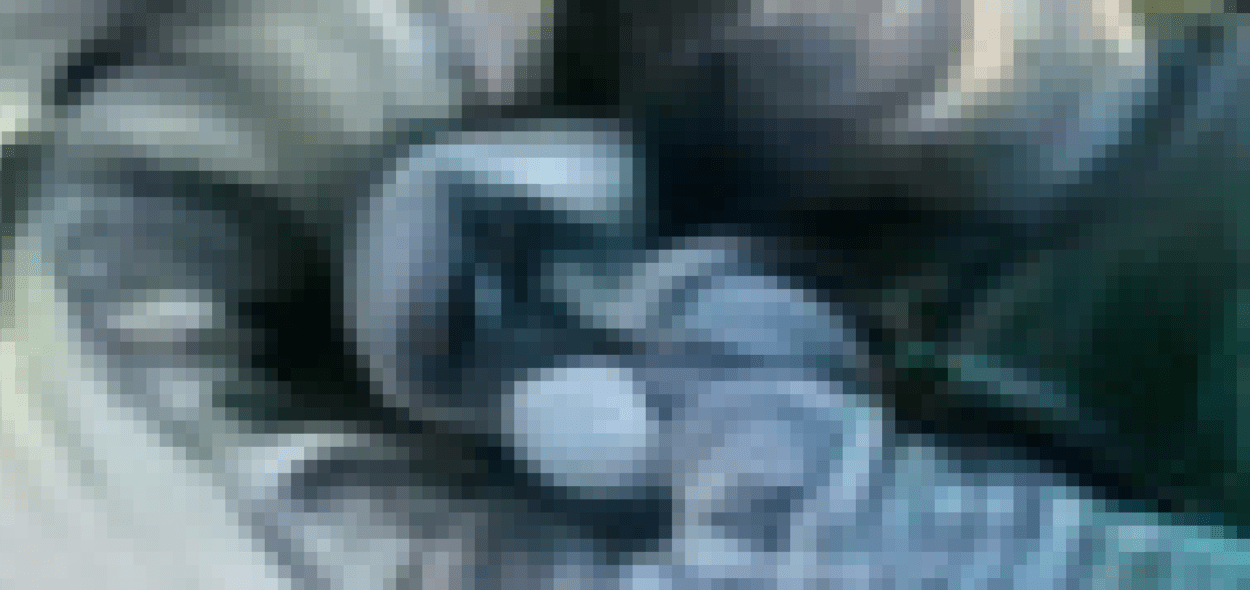
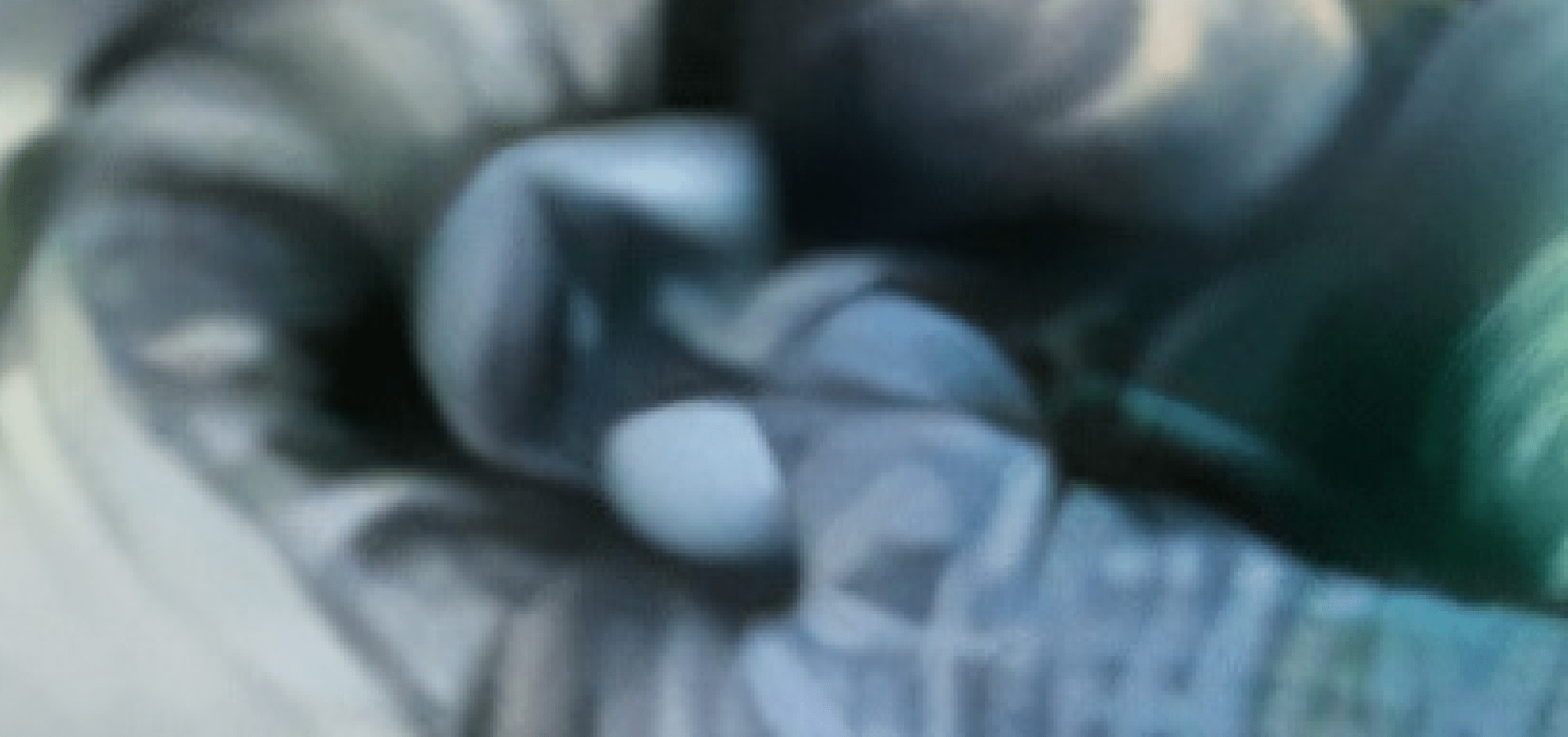 The resolution of this image is 775×775, which is not very favorable to print out. When zoomed into the arm of the chameleon, the image became visibly pixelized. I used AI image upscale to enhance the resolution of my image by 3100×3100.
The resolution of this image is 775×775, which is not very favorable to print out. When zoomed into the arm of the chameleon, the image became visibly pixelized. I used AI image upscale to enhance the resolution of my image by 3100×3100.
I repeated the same process for my other sketches as well.
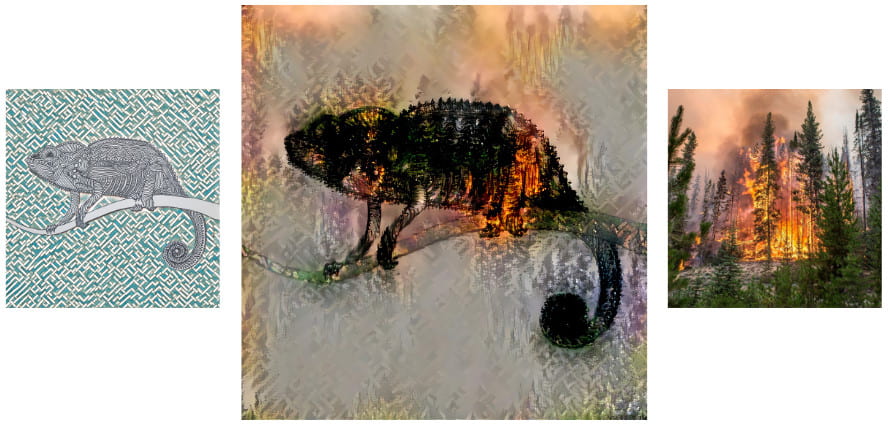
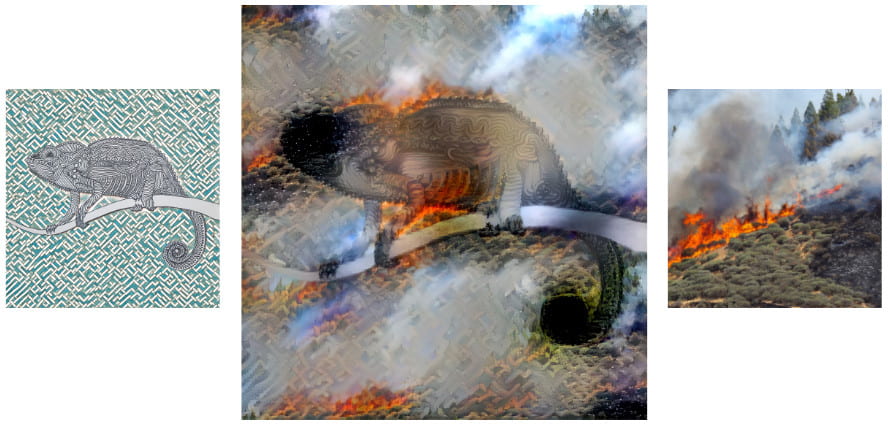
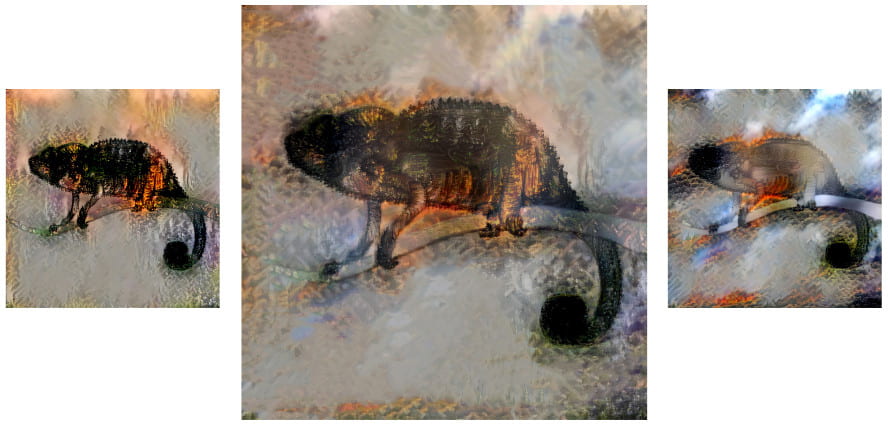
The other chameleon combined with images of forest fire.
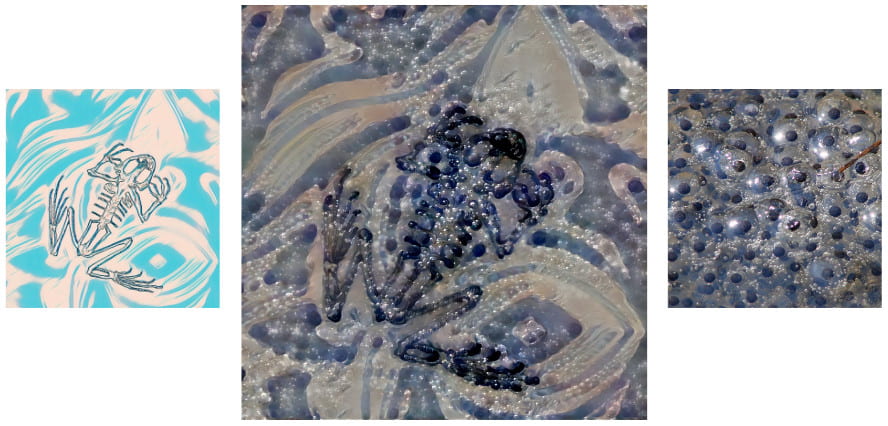
The skeleton of frog combined with a picture of frog eggs. In so doing, I tried to blur the line between life and death, drawing and photography.
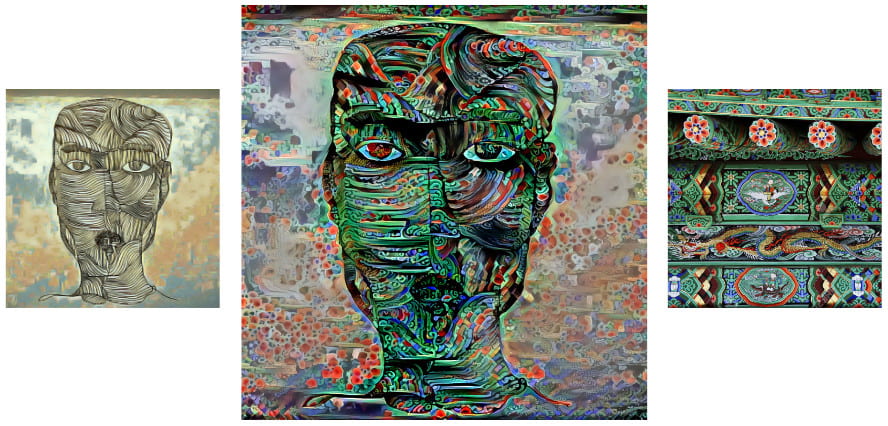
My self-portrait combined with an image of Dancheong, a Korean decorative patterns for traditional wooden buildings, especially for temples. I chose Dancheong as my style input because it is a symbolic representation of my cultural background (Korea & Buddhism).
Conclusion
I intended to focus on the effectiveness of AI as an art tool, especially in terms of creating a piece of fine arts. Using traditional art mediums such as paint and ink is not only time-consuming but mostly irreversible. We cannot simply press CTRL+Z in a canvas. When I create an artwork, the biggest obstacle has always been the lack of my techniques; my enthusiasm cooled off when I could not visualize my thoughts, ideas, and impressions in a way I had envisioned. The AI tools I have learned during the class, in this sense, could fill in the technical gap of my art experiments. After using AI to color and morph my drawings, I printed out the generated results and juxtaposed my original sketches with AI-modified versions of them in order to show the process of how AI spiced up my raw ideas. One remarkable thing I noticed during my project is that, AI arts also requires a sort of “technique.” I had to choose tools and data that are appropriate to visualize my ideas, modify the parameters, manipulate my data (sketches and photos) to yield more satisfying results. Some may think AI artwork is just a click away, but in fact I think it requires inspiration and consideration as much as traditional art mediums do. I would like to continue my art experiments with the tools I learned during this course, and explore more about the possibilities of artificial intelligence and computer vision in terms of creating artworks. Huge thanks to Aven who spared no pains to help us learn the inside scoop of AI Arts, and all other classmates who gave me extremely valuable feedback.